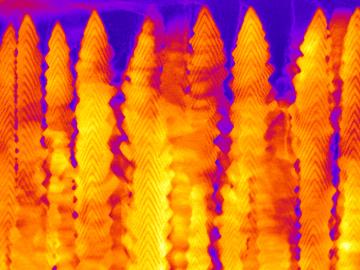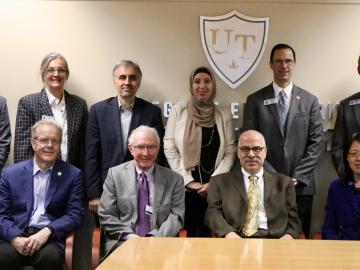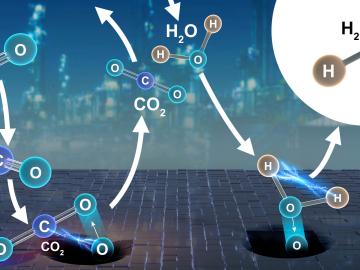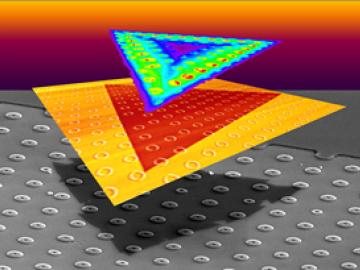
Filter News
Area of Research
- (-) Fusion and Fission (7)
- (-) Fusion Energy (1)
- (-) Materials (54)
- (-) Neutron Science (45)
- Advanced Manufacturing (2)
- Biology and Environment (13)
- Computer Science (4)
- Electricity and Smart Grid (1)
- Energy Science (45)
- Functional Materials for Energy (1)
- Isotopes (1)
- Materials for Computing (7)
- National Security (17)
- Nuclear Science and Technology (5)
- Quantum information Science (2)
- Sensors and Controls (1)
- Supercomputing (39)
News Type
News Topics
- (-) Advanced Reactors (7)
- (-) Artificial Intelligence (5)
- (-) Chemical Sciences (23)
- (-) Cybersecurity (4)
- (-) Molten Salt (2)
- (-) Neutron Science (46)
- (-) Quantum Science (12)
- (-) Security (2)
- (-) Transportation (8)
- 3-D Printing/Advanced Manufacturing (15)
- Big Data (1)
- Bioenergy (9)
- Biology (8)
- Biomedical (7)
- Biotechnology (1)
- Buildings (3)
- Composites (3)
- Computer Science (11)
- Coronavirus (7)
- Critical Materials (8)
- Energy Storage (21)
- Environment (12)
- Exascale Computing (1)
- Fossil Energy (1)
- Frontier (4)
- Fusion (12)
- Grid (4)
- High-Performance Computing (4)
- Irradiation (1)
- Isotopes (5)
- ITER (2)
- Machine Learning (3)
- Materials (45)
- Materials Science (41)
- Microscopy (14)
- Nanotechnology (23)
- National Security (3)
- Nuclear Energy (16)
- Partnerships (11)
- Physics (16)
- Polymers (6)
- Quantum Computing (1)
- Simulation (2)
- Space Exploration (1)
- Summit (4)
Media Contacts

A team led by the Department of Energy’s Oak Ridge National Laboratory synthesized a tiny structure with high surface area and discovered how its unique architecture drives ions across interfaces to transport energy or information.

Matthew R. Ryder, a researcher at the Department of Energy’s Oak Ridge National Laboratory, has been named the 2020 Foresight Fellow in Molecular-Scale Engineering.

An international team of scientists, led by the University of Manchester, has developed a metal-organic framework, or MOF, material

Researchers at the Department of Energy’s Oak Ridge National Laboratory have received five 2019 R&D 100 Awards, increasing the lab’s total to 221 since the award’s inception in 1963.

The U.S. Department of Energy announced funding for 12 projects with private industry to enable collaboration with DOE national laboratories on overcoming challenges in fusion energy development.

ORNL and The University of Toledo have entered into a memorandum of understanding for collaborative research.

Using the Titan supercomputer and the Spallation Neutron Source at the Department of Energy’s Oak Ridge National Laboratory, scientists have created the most accurate 3D model yet of an intrinsically disordered protein, revealing the ensemble of its atomic-level structures.

Collaborators at the Department of Energy’s Oak Ridge National Laboratory and U.S. universities used neutron scattering and other advanced characterization techniques to study how a prominent catalyst enables the “water-gas shift” reaction to purify and generate hydrogen at industrial scale.

A team led by scientists at the Department of Energy’s Oak Ridge National Laboratory explored how atomically thin two-dimensional (2D) crystals can grow over 3D objects and how the curvature of those objects can stretch and strain the

An ORNL-led team's observation of certain crystalline ice phases challenges accepted theories about super-cooled water and non-crystalline ice. Their findings, reported in the journal Nature, will also lead to better understanding of ice and its various phases found on other planets, moons and elsewhere in space.


